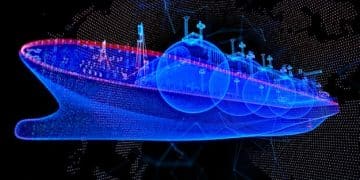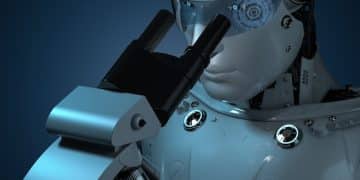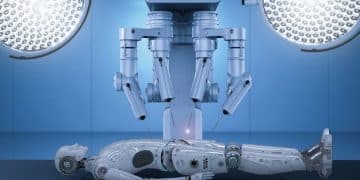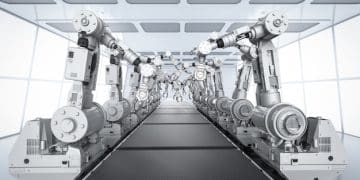3D Printing Revolution: Custom Manufacturing in US Industries
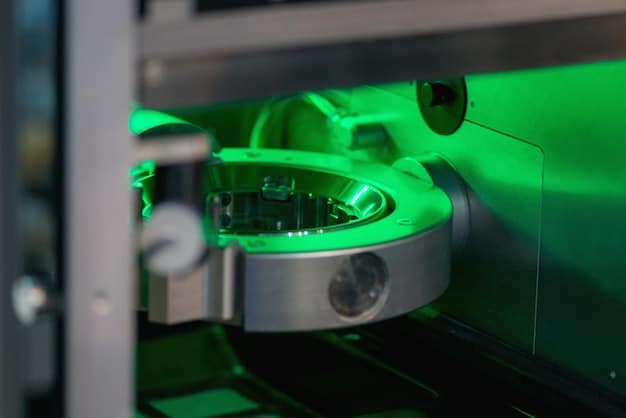
The 3D Printing Revolution: Custom Manufacturing in US Industries is profoundly redefining production paradigms, enabling unprecedented personalization and localized fabrication across diverse sectors, including healthcare, aerospace, and consumer goods, by transforming design-to-product cycles and enhancing supply chain resilience.
The landscape of American industry is experiencing a profound transformation, driven by advancements in additive manufacturing. The 3D Printing Revolution: Custom Manufacturing in US Industries is not merely a technological upgrade but a fundamental shift, allowing for unparalleled customization and localized production that redefines efficiency and innovation across sectors.
The Dawn of a New Industrial Age: Additive Manufacturing’s Ascent
The industrial revolutions of the past reshaped societies through mechanization and mass production. Today, we are witnessing another pivotal moment: the additive manufacturing era. This paradigm shift, often synonymous with 3D printing, transcends traditional subtractive methods by building objects layer by layer from digital designs. This fundamental difference unlocks capabilities previously unimaginable, particularly in custom manufacturing.
The journey from concept to tangible product is being drastically accelerated. Prototypes can be generated within hours, iteration cycles are compressed, and complex geometries, once confined to theoretical models, are now routinely manufactured. This agility is a game-changer for American industries, especially those vying for competitive edges in global markets.
From Prototyping to Production: The Evolution of 3D Printing
Initially, 3D printing found its niche primarily in rapid prototyping. Engineers and designers leveraged its speed and cost-effectiveness to test designs before committing to expensive tooling. However, material science advancements and improved machine precision have propelled 3D printing beyond mere concept models into full-scale production, enabling the creation of final-use parts.
- Rapid Prototyping: Quick and cost-effective iteration of designs.
- Tooling and Molds: Producing custom jigs, fixtures, and molds for traditional manufacturing processes.
- Functional Parts: Creation of end-use components for various industries, from aerospace to medical.
- Mass Customization: Tailoring products to individual customer needs without significant cost penalties.
This evolution means that what was once a novelty is now a critical manufacturing process. Companies are no longer asking if 3D printing is viable for production, but how quickly they can integrate it into their existing workflows to capitalize on its unique benefits, driving innovation and efficiency.
Custom Manufacturing Redefined: Flexibility and Personalization
One of the most compelling aspects of the 3D printing revolution in the US is its inherent ability to facilitate custom manufacturing. Unlike traditional methods, which thrive on economies of scale through standardized production runs, 3D printing shines in producing bespoke items, often at a unit cost comparable to or even below mass-produced alternatives for complex geometries.
This shift from “one-size-fits-all” to “made-to-order” represents a significant competitive advantage. Businesses can cater to niche markets, develop highly specialized products, and react almost instantaneously to evolving customer demands. This level of flexibility was once economically unfeasible for most industries, reserving customization for high-end, low-volume goods.
Unlocking Niche Markets and Specialized Products
Custom manufacturing through 3D printing has opened doors to markets previously inaccessible due to cost or complexity:
- Medical Devices: Patient-specific implants, prosthetics, and surgical guides.
- Aerospace Components: Lightweight, topologically optimized parts for specific aircraft models.
- Consumer Goods: Personalized footwear, customized jewelry, unique home decor items.
- Automotive Parts: Bespoke interior components or specialized racing parts.
The ability to create highly specialized products on demand reduces inventory risks, minimizes waste from overproduction, and ensures that customers receive precisely what they need, rather than what is merely available. This personalized approach fosters stronger customer loyalty and opens up significant revenue streams in diverse sectors.
The flexibility extends beyond product customization to the manufacturing process itself. Changes to designs can be implemented digitally with minimal downtime, a stark contrast to the lengthy and expensive retooling required in traditional factories. This agility is vital in fast-paced industries where product lifecycles are constantly shrinking.
Impact on Key US Industries: Case Studies in Innovation
The transformative power of 3D printing is not theoretical; it is actively reshaping critical US industries. From the meticulous demands of aerospace to the personalized needs of healthcare, additive manufacturing is providing solutions that enhance performance, reduce costs, and accelerate development cycles.
Aerospace and Defense: Lighter, Stronger, Smarter
The aerospace sector has been an early and enthusiastic adopter of 3D printing. The ability to create complex, lightweight structures with internal lattices not achievable through conventional machining significantly reduces material usage and overall component weight. This directly translates to fuel efficiency and extended range for aircraft.
For example, GE Aviation has been a pioneer, 3D printing fuel nozzles for its LEAP jet engines. These nozzles are 25% lighter and five times more durable than their conventionally manufactured counterparts. This adoption signifies a move beyond prototyping to true production-grade components that impact flight safety and performance.
- Weight Reduction: Optimized designs lead to significant fuel savings.
- Complex Geometries: Production of parts with intricate internal structures for enhanced performance.
- Supply Chain Resilience: On-demand production of spare parts, reducing reliance on distant suppliers.
- Consolidation of Parts: Printing complex assemblies as single pieces reduces manufacturing steps and potential failure points.
The defense sector also benefits immensely, particularly in mission-critical applications where custom parts are needed quickly in remote locations, bolstering readiness and operational efficiency.
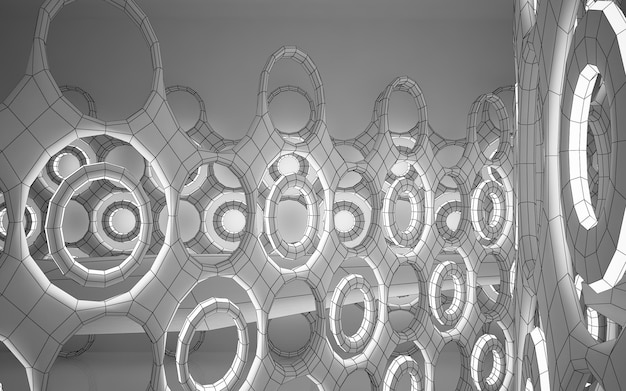
Healthcare and Medical Devices: Precision and Personalization
In healthcare, 3D printing is revolutionizing patient care through personalization. From custom prosthetics and orthotics tailored to an individual’s anatomy to patient-specific surgical guides, the technology is enabling better outcomes and faster recoveries.
The ability to precisely match medical devices to patient specifications reduces discomfort and improves functionality. Furthermore, bioprinting, a cutting-edge application, holds the promise of fabricating living tissues and organs for transplantation, though this remains largely in the research phase.
The on-demand production of surgical instruments and models for pre-surgical planning is also enhancing precision in complex operations. Hospitals can now print anatomical models derived from CT or MRI scans, allowing surgeons to practice intricate procedures and identify potential challenges beforehand.
Reshaping Supply Chains and Localizing Production
Beyond product customization, 3D printing is fundamentally altering global supply chains. The traditional model, often reliant on overseas manufacturing for cost efficiency, can be vulnerable to disruptions. Additive manufacturing offers a compelling alternative by enabling localized, on-demand production.
This capability reduces lead times, minimizes transportation costs, and enhances supply chain resilience against geopolitical uncertainties or pandemics. Instead of shipping parts across continents, companies can now print them closer to the point of need, reducing their carbon footprint and improving responsiveness.
The Rise of Microfactories and Distributed Manufacturing
3D printing facilitates the emergence of “microfactories” – small, highly automated manufacturing units that can be strategically located to serve specific regional demands. This distributed manufacturing model challenges the centralized factory concept of the past.
It means a significant portion of manufacturing could return to US shores, creating new jobs and fostering local economic growth. Inventory management is also transformed; rather than holding vast quantities of physical stock, companies can store digital files and print items only when an order is placed, greatly reducing warehousing costs and waste.
This localized, on-demand approach empowers small and medium-sized enterprises (SMEs) to compete more effectively with larger corporations by offering tailored products without the overhead of massive production facilities. It decentralizes production, making the supply chain both more flexible and robust.
Challenges and the Path Forward
While the promise of the 3D printing revolution is immense, several challenges must be addressed for its full potential to be realized across US industries. These include material limitations, scalability issues for certain applications, initial investment costs, and the need for a skilled workforce.
Overcoming Material and Scalability Hurdles
Current 3D printing technologies, while advanced, still have limitations regarding the range of printable materials and the speed of production for very large volumes. While metal and polymer printing are well-established, developing new high-performance materials suitable for additive processes is an ongoing area of research.
For high-volume, commodity goods, traditional manufacturing methods often remain more cost-effective. The sweet spot for 3D printing lies in customization, complexity, and on-demand production, not necessarily in churning out millions of identical, simple parts.
The pace of material development is accelerating, with new composites, ceramics, and even multi-material printing capabilities emerging. This will broaden the applications and increase the versatility of 3D printing substantially.
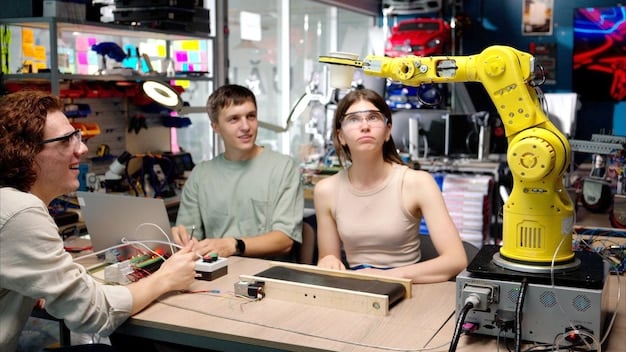
Investment and Workforce Development
The initial investment in industrial-grade 3D printers can be substantial, posing a barrier for smaller businesses. However, as the technology matures and adoption increases, costs are gradually decreasing, making it more accessible.
Perhaps more critically, there is a pressing need for a skilled workforce that understands additive manufacturing principles, materials science, and digital design. Educational institutions and vocational training programs in the US are increasingly incorporating 3D printing into their curricula to meet this demand.
- Education: Developing academic and vocational programs focused on additive manufacturing.
- Training: Upskilling existing manufacturing teams to work with new technologies.
- Collaboration: Fostering partnerships between industry, academia, and government to accelerate R&D.
- Standardization: Establishing industry standards for materials, processes, and quality control.
Addressing these challenges proactively will ensure that the US remains at the forefront of this industrial transformation, leveraging 3D printing to boost economic competitiveness and innovation.
Future Outlook: Hyper-Customization and Sustainability
Looking ahead, the future of 3D printing in US industries appears poised for continued expansion and integration. The trajectory points towards hyper-customization, where products are not just personalized but are uniquely engineered for individual users at an unprecedented scale. This includes advancements in biomaterials, smart materials, and even larger-scale construction printing.
Sustainability will also be a major driver. Additive manufacturing inherently produces less waste than subtractive methods, as material is only added where needed. Coupled with localized production, this significantly reduces the environmental impact associated with global logistics and traditional manufacturing processes.
The convergence of 3D printing with other emerging technologies like artificial intelligence (AI), machine learning (ML), and robotics will unlock even greater efficiencies and functionalities. AI can optimize designs faster than humans, ML can predict material behaviors, and robotics can handle post-processing and automation. This synergy will further embed additive manufacturing into the fabric of US industrial capabilities, making it an indispensable tool for maintaining a competitive edge in a rapidly evolving global economy.
The ongoing research into multi-material printing, direct printing of electronics, and even cellular manufacturing promises a future where products are not just printed but are imbued with intelligence and advanced functionalities from their very inception, opening new frontiers for innovation and product design.
| Key Aspect | Brief Description |
|---|---|
| 🚀 Production Shift | Moves from mass production to highly customized, on-demand manufacturing. |
| 💡 Innovation Driver | Enables complex designs and rapid prototyping, accelerating R&D across industries. |
| 🌍 Supply Chain Impact | Fosters localized production, reducing reliance on global supply chains and enhancing resilience. |
| 🌱 Sustainability Gains | Less material waste and reduced transportation emissions due to localized manufacturing. |
Frequently Asked Questions About 3D Printing in US Industries
▼
3D printing, or additive manufacturing, builds three-dimensional objects layer by layer from a digital design. This contrasts with traditional subtractive methods that remove material from a larger block. The key difference lies in efficiency for complex parts, waste reduction, and the ability to produce highly customized items without extensive retooling, making it ideal for specialized US industrial applications.
▼
Several US industries are significantly impacted, notably aerospace and defense (for lightweight, complex parts), healthcare (for personalized implants and prosthetics), automotive (for custom components and rapid prototyping), and consumer goods (for bespoke or on-demand products). Its versatility allows integration across various sectors seeking innovation and efficiency in custom manufacturing processes.
▼
3D printing bolsters supply chain resilience by enabling localized and on-demand production. Instead of relying on distant factories, companies can print parts closer to the point of use, reducing lead times, mitigating risks from global disruptions, and minimizing transportation costs. This capability supports self-sufficiency and strategic manufacturing within the US, reducing vulnerability to external shocks.
▼
The primary advantages include unparalleled personalization (tailoring products to individual needs), design flexibility (creating complex geometries impossible with traditional methods), reduced waste (additive process), and speed in prototyping and small-batch production. These benefits allow US industries to offer highly specialized products, enhance innovation, and respond rapidly to market demands, driving a new era of bespoke production.
▼
Despite its advantages, challenges include high initial investment costs for industrial-grade printers, current limitations in material variety for certain applications, and the need for a highly skilled workforce to operate and design for additive manufacturing. Overcoming these hurdles through continued R&D, cost reductions, and educational programs will be crucial for broader adoption in US industries.
Conclusion
The 3D Printing Revolution: Custom Manufacturing in US Industries is far more than a passing trend; it represents a fundamental shift in how products are conceived, designed, and brought to life. Empowering unprecedented levels of customization, fostering localized production, and driving innovation across diverse sectors, additive manufacturing is solidifying its role as a cornerstone of modern American industry. While challenges remain, the continuous advancements in materials, technology, and workforce development promise an exciting future where agility, personalization, and sustainability define our manufacturing landscape. As the US continues to embrace this transformative power, it is clear that 3D printing will remain a vital catalyst for economic growth and global competitiveness.

